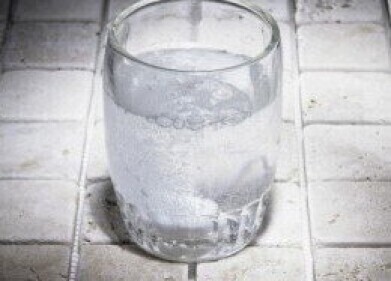PFAS in water
Where Do PFAS in Drinking Water Come From?
Sep 26 2021
Per- and polyfluoroalkyl substances, better known as PFAS or “forever chemicals”, are a contaminant of emerging concern that has received increased amounts of media attention in recent years. As their moniker suggests, they are incredibly resilient compounds that are able to endure for 1,000 years or more. They’re also capable of traversing great distances, meaning that they’re found all over the planet today.
In fact, a recent investigation by the US activist organisation Environmental Working Group (EWG) found that 95% of the American population was exposed to PFAS through their tap water. Although there is still not much research into the health effects of imbibing PFAS in large concentrations, the early studies indicate that it can cause serious health complications. But where did PFAS come from? How do they get into our drinking water? And what can be done to limit our exposure?
Where do PFAS originally come from?
PFAS are a completely synthetic group of chemicals, meaning they do not occur naturally at all. Instead, they have been engineered by man to serve a variety of different purposes, including the application of non-stick coating to pots and pans, stain resistance on clothing and upholstery and waterproof properties for jackets, coats and tarpaulins. They are also used in fire extinguishers and processing machinery.
However, the very molecular structure which lends them these useful qualities also makes them incredibly difficult to break down. Indeed, there are several of the 4,700 PFAS in existence today for which scientists have no half-life, meaning they cannot be certain exactly how long it will take these chemicals to degrade in the natural environment.
How do PFAS get into drinking water?
Because PFAS endure for such a long time, and because they are capable of travelling freely in the natural world, there are myriad different ways they can infiltrate our drinking water. They can be scrubbed off cookware or washed off textiles and head down the plughole. Rain can force them off bike chains or flush firefighter foam into sewerage systems. Or, due to their remarkable longevity, they can simply leach off the product in question after it has come to the end of its lifespan.
Once they have entered the wastewater system, they are robust enough to withstand most modern wastewater treatment processes. This then affords them the opportunity to infiltrate rivers, streams and seas, as well as lakes, reservoirs and other sources of drinking water.
What can be done about PFAS?
Although it’s virtually impossible for individuals to avoid exposure to PFAS during the course of their daily lives, their presence in drinking water can be detected by sophisticated monitoring methods. For more information on the latest techniques employed in this sector, please check out the upcoming talk Automated Sample Preparation for Determination of Perfluoroalkyl and Polyfluoroalkyl Substances PFAS in drinking water according to USEPA 537.1 and European Regulation.
Two of the most commonly PFAS – PFOA and PFOS chemicals – have already been outlawed in many countries around the world. However, the fact that they are still being manufactured in some parts of the globe, alongside their persistence and mobility, means that they still represent an ever-present danger to the global population.
Digital Edition
IET 35.2 March
April 2025
Air Monitoring - Probe Sampling in Hazardous Areas Under Extreme Conditions - New, Game-Changing Sensor for Methane Emissions - Blue Sky Thinking: a 50-year Retrospective on Technological Prog...
View all digital editions
Events
May 06 2025 Nuremberg, Germany
May 10 2025 Karachi, Pakistan
May 11 2025 Vienna, Austria
May 11 2025 Seoul, South Korea
Salon Analyse Industrielle & Instrumentation
May 14 2025 Paris, France












_(4427399123)-(2).jpg)






